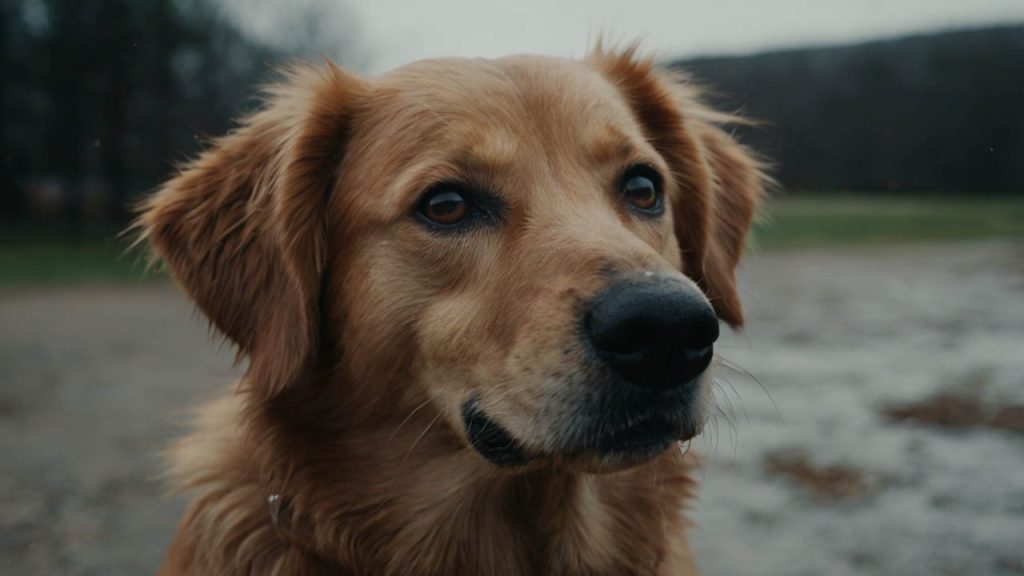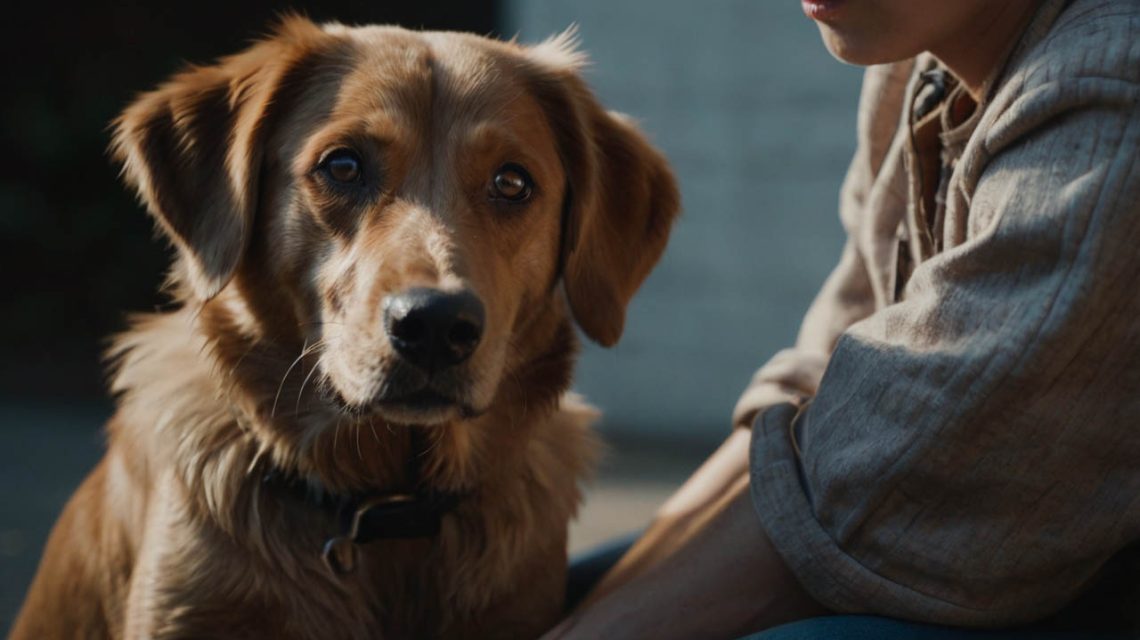Solving Separation Anxiety in Dogs: The Complete Guide to a Calm and Confident Pet
Does the simple act of picking up your keys trigger a wave of panic in your dog? Do you come home to a scene of destruction, incessant barking complaints from neighbors, or a pup who is soaked in drool? If this sounds familiar, you are likely dealing with separation anxiety in dogs, a genuine panic disorder that can shatter the peace of your home and break your heart.
Let’s talk about Alex and their newly adopted rescue, Milo. Alex was overjoyed to bring Milo home, but that joy quickly turned to distress. Every time Alex left, even for a few minutes, Milo would howl, scratch furiously at the door, and chew the window sills. This wasn’t bad behavior; it was a desperate cry for help. Milo was suffering from severe separation anxiety in dogs. His story is a powerful reminder that behind the chaos is a terrified animal.
But here’s the hopeful part: Alex learned the right techniques, and with patience, they transformed Milo’s terror into confidence. This guide will give you that same power. We will dive deep into what separation anxiety in dogs is, how to identify it, and provide a step-by-step, proven plan to help your best friend find peace when they are alone.
What Is Separation Anxiety in Dogs, Really?
First things first, it’s critical to understand that separation anxiety in dogs is not your dog being spiteful or naughty. It is a clinical condition, equivalent to a human panic attack. The dog experiences overwhelming distress from being left alone or separated from their person. This isn’t just a little sadness; it’s a full-blown phobia of isolation.
Research from the American Veterinary Medical Association (AVMA) indicates that this condition is incredibly common, affecting a significant portion of the canine population. Understanding its clinical nature is the first step toward effective and humane treatment.
Spotting the Telltale Signs of Separation Anxiety in Dogs
The symptoms are often unmistakable once you know what you’re looking for. They occur exclusively when the dog is left alone or believes they are alone.
- Destructive Behavior: This is often focused on escape routes like doors and windows. Chewing, digging, and scratching at these points are classic signs.
- Excessive Vocalization: Persistent barking, howling, or whining that begins soon after you leave. Your neighbors might be the first to tell you about this one.
- Inappropriate Elimination: A perfectly house-trained dog having accidents (urination or defecation) only when left alone is a huge red flag for separation anxiety in dogs.
- Escape Attempts: Frantic efforts to get out of a crate or the house, which can often lead to self-injury.
- Pacing and Restlessness: An inability to settle down, often walking in circles or trotting anxiously from window to door.
- Physiological Signs: Excessive drooling (hypersalivation) or panting when it is not hot.

Is It True Separation Anxiety or Something Else?
Before you start a treatment plan, you must rule out other potential issues. Sometimes, behaviors that look like separation anxiety in dogs have different root causes.
- Boredom: A young, high-energy dog might chew or dig simply because they have nothing better to do. The destruction is usually more random, not focused on exits.
- Incomplete House-Training: Accidents might happen because the dog was never fully trained or has a medical issue. A vet check-up is essential to rule out urinary tract infections or other problems.
- Territorial Barking: The dog might be barking at people or animals passing by the window, not because they are alone.
Why You Must Address Separation Anxiety in Dogs
Ignoring this condition is not an option. The impact of chronic, untreated separation anxiety in dogs is severe for everyone involved. For the dog, the constant state of panic floods their system with stress hormones like cortisol. This can weaken their immune system, cause gastrointestinal upset, and lead to other long-term health problems.
For you, the owner, the constant worry, guilt, and cost of property damage can be overwhelming. It can strain your relationship with your pet and limit your own freedom. In my experience, addressing the root cause is the only path to a healthy, sustainable life for both you and your dog.
Your Step-by-Step Plan to Treat Separation Anxiety in Dogs
Here’s the thing: you can’t fix this overnight. But with a systematic, compassionate approach, you can make incredible progress. The gold-standard treatment, recommended by veterinary behaviorists worldwide, is a combination of management and behavior modification.
Step 1: Management – Preventing Panic Today
Your first goal is to stop your dog from practicing the panic. Every time they experience a full-blown anxiety attack, the neural pathways for that fear get stronger.
- Suspend Absences (Temporarily): This sounds impossible, but it’s the most critical first step. Do whatever you can to ensure your dog is not left alone longer than they can handle (which might be zero seconds right now). This could mean using doggy daycare, hiring a pet sitter, working from home, or asking friends and family for help. This is a temporary measure while you work on training.
- Consult Your Veterinarian: Rule out any underlying medical issues. Your vet can also discuss whether anti-anxiety medication could be a helpful tool to make your dog more receptive to training.
Step 2: Desensitization & Counter-Conditioning for Separation Anxiety
This is the core of the training. You will slowly teach your dog that being alone is safe and even rewarding.
- Desensitization (DS): Gradually exposing your dog to being alone in tiny increments they can handle without panicking.
- Counter-Conditioning (CC): Changing your dog’s emotional response from fear to anticipation of something good (like a super high-value treat).
Let’s walk through this with Alex and Milo.
- Identify Departure Cues: Alex listed everything they did before leaving: putting on shoes, grabbing keys, putting on a jacket. These were Milo’s triggers.
- Unlink the Cues from Departure: Alex started performing these cues randomly throughout the day, without leaving. They’d pick up their keys, jingle them, and then sit down to watch TV. They’d put on their jacket, walk to the kitchen for a snack, and take it off. This taught Milo that keys don’t always mean “abandonment.”
- Start with “Micro-Departures”: Alex began by just touching the doorknob. If Milo stayed calm, he got a tiny piece of boiled chicken. Then, they progressed to turning the knob. Then opening the door an inch. Then stepping out for one second before coming back in. Each step was paired with a reward for calm behavior. The key is to go so slowly that the dog never panics. If Milo showed any sign of stress, Alex went back to the previous successful step.
Step 3: Fostering Independence to Combat Separation Anxiety in Dogs
A dog suffering from separation anxiety in dogs is often a “Velcro dog” who follows you everywhere. You need to gently teach them that being on their own for a moment is okay.
- Reward “Place” or Mat Work: Train your dog to go to their bed or a specific mat and stay there. Start with short durations while you’re in the same room, then gradually increase the time and distance. This teaches them to be comfortable in their own space.
- No More Velcro: Use baby gates to create short periods of separation while you’re still at home. If you go to the bathroom, leave them on the other side of the gate with a special toy.
Common Mistakes When Treating Separation Anxiety in Dogs
Avoiding these pitfalls is just as important as implementing the right strategies.
| Mistake | Why It’s Wrong | What to Do Instead |
|---|---|---|
| Using a Crate | For a dog with true separation anxiety in dogs, a crate can become a cage of terror, leading to frantic escape attempts and injury. It can amplify the fear of confinement. | Focus on behavior modification in a dog-proofed room. Only use a crate if your dog already loves it as their safe den. |
| Getting Another Dog | The anxiety is about being separated from you, not just being alone. A new dog usually won’t solve the problem and can sometimes even pick up the anxious behaviors. | Focus on building your current dog’s confidence and independence. |
| Punishment | Scolding your dog for anxious behavior will only increase their fear and damage your bond. They can’t connect the punishment to their past actions. | Ignore the old mess, focus on management to prevent new ones, and implement positive training. |
Expert Quote: As celebrated veterinary behaviorist Dr. Patricia McConnell states, “Punishment is not only ineffective at treating separation anxiety, it’s utterly counterproductive. It’s like punishing a child for being afraid of the dark.”
Best Practices & Tools to Support Your Training
While training is the foundation, these tools can provide valuable support.
- High-Value Enrichment Toys: Use toys that can be stuffed with food (like Kongs) and give them to your dog only when you are practicing departures. This helps build a positive association with you leaving.
- Pet Cameras: A camera allows you to monitor your dog’s stress levels during training. You can see the exact moment their body language shifts, so you know when to return before they panic.
- Calming Aids:
- Pheromone Diffusers (e.g., Adaptil): These release a synthetic version of the calming pheromone a mother dog produces.
- Anxiety Vests (e.g., ThunderShirt): These apply gentle, constant pressure, which has a calming effect on many dogs.
- Supplements: Products containing L-theanine or tryptophan can help take the edge off. Always consult your vet before starting any supplement.
Quick Tip Box:
The “Boring” Goodbye and Hello: Make your departures and arrivals the most boring events of the day. Avoid emotional, drawn-out goodbyes or frantic, high-energy greetings. This low-key approach teaches your dog that your comings and goings are no big deal.

A Real-World Case Study: Milo’s Journey with Separation Anxiety
Let’s revisit Alex and Milo. Their journey took about four months of consistent effort.
- Month 1: Focus was on management (Milo was never left alone) and unlinking departure cues. They could successfully leave for 5-10 seconds.
- Month 2: They slowly built up the duration, using a pet camera to monitor Milo’s threshold. They reached 5 minutes of calm absence. Alex also started Milo on a vet-recommended calming supplement.
- Month 3: They had a breakthrough, reaching 30 minutes. Milo would work on his special “departure Kong” and then settle down for a nap.
- Month 4: Alex could leave for 1-2 hours for errands. The howling and destruction had completely stopped. Milo had learned that being alone was safe and predictable.
FAQ: Your Questions About Separation Anxiety in Dogs
Q: Are certain breeds more prone to separation anxiety?
A: While any dog can develop it, it’s often seen in companion breeds like Labradors, Chihuahuas, and German Shepherds. However, a dog’s individual history (especially for rescues) is a much bigger factor than breed.
Q: Can I crate train a dog with separation anxiety?
A: It’s very difficult and often not recommended. If a dog panics in a crate, it can lead to dangerous escape attempts. It’s generally safer to use a dog-proofed room with a baby gate.
Q: How long does it take to treat separation anxiety in dogs?
A: This varies greatly depending on the severity. Mild cases might see improvement in a few weeks. Severe, long-standing cases can take many months or even a year of consistent training. Patience is essential.
Q: When is medication necessary for separation anxiety?
A: Medication is often recommended for moderate to severe cases. It’s not a “cure,” but it can lower a dog’s anxiety enough for them to be able to learn from behavior modification. Think of it as a tool that makes the training possible. Consult a vet or veterinary behaviorist.
Conclusion: Your Partnership in Conquering Separation Anxiety
Solving separation anxiety in dogs is a marathon, not a sprint. It is a journey that tests your patience but ultimately deepens the bond you share with your pet in a profound way. Throughout this guide, we’ve armed you with the knowledge to understand the panic, a clear plan to manage it, and the step-by-step training protocols to build your dog’s confidence. You are their safe person, and now you can be their best teacher, too.
Remember that every small success—one second longer, one less bark, one calm moment—is a monumental victory. You are not just stopping destruction; you are healing a terrified mind and giving your dog the incredible gift of peace. The journey from Alex and Milo’s frantic first days to their calm, happy present is possible for you, too.
Your dog is counting on you. Take the first step today. Choose one management strategy you can implement immediately. Suspend absences, set up a pet camera, or simply practice picking up your keys without leaving. This single action is the beginning of a new, calmer life for you and your beloved dog.



 Separation Anxiety in Dogs: Signs & Solutions
Separation Anxiety in Dogs: Signs & Solutions